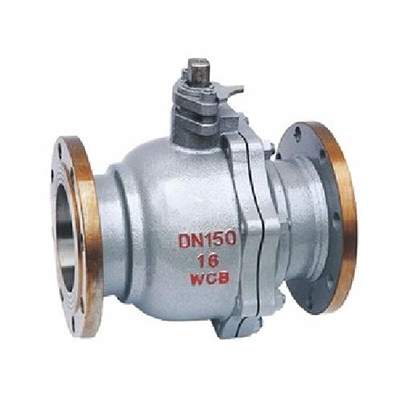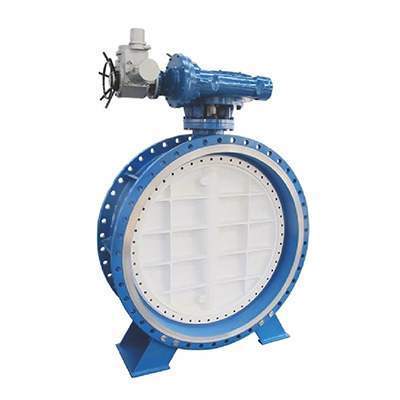Welcome to My Blog!
Before we dive into the content, I’d love for you to join me on my social media platforms where I share more insights, engage with the community, and post updates. Here’s how you can connect with me:
Facebook:https://www.facebook.com/profile.php?id=61563865935136
Now, let’s get started on our journey together. I hope you find the content here insightful, engaging, and valuable.
Introduction

Control valve types are critical components in industrial processes, regulating the flow of fluids, gases, or other materials to ensure operational efficiency and safety. At Fanlei, a leading valve manufacturing company specializing in research, design, production, and sales, we understand the importance of selecting the right control valve type for your specific application. With a commitment to delivering high-quality valve products that meet diverse industry needs, Fanlei is your trusted partner in navigating the complex world of control valves. This comprehensive guide explores the various control valve types, their applications, and key considerations to help you make informed decisions for your systems.
Control valves are essential for precise control in industries such as oil and gas, chemical processing, water treatment, and power generation. By understanding the different types of control valves and their functionalities, you can optimize processes, reduce costs, and enhance system reliability. This blog provides a detailed overview of control valve types, offering insights into their designs, applications, and selection criteria.
What Are Control Valves and Why Are They Important?
Control valves are mechanical devices designed to regulate the flow, pressure, temperature, or level of a fluid within a system. They achieve this by adjusting the valve opening in response to signals from a controller, ensuring the system operates within desired parameters. The importance of control valve types lies in their ability to maintain process stability, improve efficiency, and prevent equipment damage.
Fanlei’s control valves are engineered to meet the rigorous demands of various industries. Whether you need to control the flow of corrosive chemicals or manage high-pressure steam, selecting the appropriate control valve type is crucial for achieving optimal performance. With decades of expertise, Fanlei designs valves that combine durability, precision, and adaptability to suit a wide range of applications.
Key Components of Control Valves
To understand control valve types, it’s essential to familiarize yourself with their core components. A typical control valve consists of:
- Valve Body: The main structure that houses the internal components and connects to the pipeline.
- Actuator: The mechanism that drives the valve’s movement, such as pneumatic, electric, or hydraulic actuators.
- Positioner: A device that ensures the valve reaches the desired position based on control signals.
- Trim: The internal elements that control the flow, including the plug, seat, and stem.
Each component plays a vital role in the performance of different control valve types. Fanlei’s advanced manufacturing processes ensure that every component is crafted with precision, delivering reliable and long-lasting performance.
Major Control Valve Types and Their Applications

Control valve types are categorized based on their design, function, and application. Below, we explore the most common types and their uses in various industries.
Globe Valves: Precision and Versatility
Globe valves are among the most widely used control valve types due to their excellent throttling capabilities and precise flow control. They feature a spherical body and a movable plug that adjusts the flow by moving closer to or away from the seat. Globe valves are ideal for applications requiring fine control, such as in chemical processing or HVAC systems.
Fanlei’s globe valves are designed to handle high-pressure and high-temperature fluids, making them suitable for demanding environments like power plants and refineries. Their robust construction ensures minimal leakage and long service life.
Ball Valves: Durability and Quick Operation
Ball valves use a spherical disc to control flow, offering quick on-off operation and tight sealing. These control valve types are highly durable and resistant to wear, making them suitable for applications involving corrosive fluids or slurries. Ball valves are commonly used in oil and gas pipelines and water treatment facilities.
At Fanlei, our ball valves are engineered for low maintenance and high reliability, ensuring consistent performance in challenging conditions.
Butterfly Valves: Compact and Cost-Effective
Butterfly valves are lightweight and compact control valve types that use a rotating disc to regulate flow. They are ideal for large-diameter pipelines and applications where space and cost are concerns, such as water distribution systems and HVAC.
Fanlei’s butterfly valves are designed for easy installation and efficient operation, offering a cost-effective solution without compromising on quality.
Diaphragm Valves: Handling Corrosive Fluids
Diaphragm valves use a flexible diaphragm to control flow, making them ideal for handling corrosive or viscous fluids. These control valve types are commonly used in pharmaceutical and food processing industries, where hygiene and contamination prevention are critical.
Fanlei’s diaphragm valves are manufactured with high-quality materials to ensure compatibility with aggressive media, providing reliable performance in sensitive applications.
Gate Valves: On-Off Control for Large Systems
Gate valves are primarily used for on-off control rather than throttling, making them suitable for large-scale systems where full flow or complete shutoff is required. These control valve types are common in water supply networks and oil pipelines.
Fanlei’s gate valves are designed for minimal pressure drop and maximum flow efficiency, ensuring optimal performance in large industrial systems.
Comparison of Control Valve Types
To help you choose the right control valve type for your application, the following table summarizes the key characteristics of the major control valve types discussed above:
| Valve Type | Primary Function | Applications | Advantages | Limitations |
|---|---|---|---|---|
| Globe Valve | Throttling and precise flow control | Chemical processing, HVAC, power plants | Excellent control, versatile | Higher pressure drop |
| Ball Valve | On-off control, tight sealing | Oil and gas, water treatment | Durable, low maintenance | Limited throttling capability |
| Butterfly Valve | Flow regulation in large pipelines | Water distribution, HVAC | Compact, cost-effective | Less precise control |
| Diaphragm Valve | Handling corrosive or viscous fluids | Pharmaceuticals, food processing | Corrosion-resistant, hygienic | Limited pressure and temperature range |
| Gate Valve | On-off control | Water supply, oil pipelines | Low pressure drop, high flow | Not suitable for throttling |
This table provides a quick reference to compare control valve types based on their functionality, applications, and pros and cons. By understanding these differences, you can make an informed decision tailored to your system’s requirements.
Factors to Consider When Selecting Control Valve Types
Choosing the right control valve type involves evaluating several factors to ensure compatibility with your system. Key considerations include:
Process Conditions
The operating conditions, such as pressure, temperature, and fluid type, significantly influence the choice of control valve type. For example, high-pressure steam systems may require robust globe valves, while corrosive fluids may necessitate diaphragm valves.
Flow Characteristics
Different control valve types offer distinct flow characteristics, such as linear, equal percentage, or quick-opening. Understanding your system’s flow requirements is essential for selecting a valve that provides optimal control.
Actuation Method
The choice of actuator—pneumatic, electric, or hydraulic—depends on the system’s control requirements and available power sources. Fanlei offers a range of actuation options to suit various control valve types, ensuring seamless integration into your system.
Maintenance and Durability
Consider the maintenance requirements and expected lifespan of the valve. Fanlei’s control valves are designed for minimal maintenance and long-term reliability, reducing downtime and operational costs.
Industry-Specific Applications of Control Valve Types
Control valve types are used across a wide range of industries, each with unique requirements. Below are some examples of how different control valve types are applied:
Oil and Gas Industry
In the oil and gas sector, ball and gate valves are commonly used for their durability and ability to handle high-pressure fluids. Fanlei’s valves are designed to meet API and ASME standards, ensuring safe and reliable operation in upstream and downstream processes.
Chemical Processing
Globe and diaphragm valves are preferred in chemical plants due to their precise control and corrosion resistance. Fanlei’s chemical-grade valves are engineered to withstand aggressive media, ensuring process safety and efficiency.
Water Treatment
Butterfly and gate valves are widely used in water treatment facilities for their cost-effectiveness and ability to handle large volumes. Fanlei’s valves are designed to meet stringent environmental regulations, providing reliable performance in water management systems.
Advances in Control Valve Technology
Recent advancements in control valve technology have enhanced the performance and efficiency of control valve types. Innovations such as smart positioners, digital control systems, and advanced materials have improved valve accuracy, reduced energy consumption, and extended service life.
Fanlei stays at the forefront of these advancements, incorporating cutting-edge technologies into our valve designs. Our research and development team continuously explores new materials and actuation methods to deliver control valve types that meet evolving industry demands.
Maintenance Tips for Control Valve Types

Proper maintenance is essential to ensure the longevity and performance of control valve types. Here are some tips to keep your valves in top condition:
- Regular Inspections: Check for leaks, corrosion, or wear in the valve body and trim.
- Lubrication: Ensure moving parts, such as the stem and actuator, are properly lubricated.
- Calibration: Periodically calibrate positioners to maintain accurate control.
- Cleaning: Remove debris or buildup from the valve to prevent blockages.
Fanlei provides detailed maintenance guides and support services to help you maximize the lifespan of your control valves, ensuring consistent performance and reduced operational costs.
Conclusion
Control valve types are the backbone of efficient industrial processes, offering precise control and reliability across a wide range of applications. By understanding the different types—globe, ball, butterfly, diaphragm, and gate valves—you can select the best solution for your system’s needs. Fanlei’s commitment to quality and innovation ensures that our control valves deliver exceptional performance, durability, and value. Whether you’re in oil and gas, chemical processing, or water treatment, our expertly crafted valves are designed to meet your specific requirements.
Ready to invest in high-quality control valve types for your operations? Contact us at Fanlei to explore our extensive range of valve solutions and find the perfect fit for your system.
FAQ
What are the main types of control valves?
The main control valve types include globe valves, ball valves, butterfly valves, diaphragm valves, and gate valves, each suited for specific applications based on their design and functionality.
How do I choose the right control valve type?
Consider factors such as process conditions, flow requirements, actuation method, and maintenance needs. Consulting with a trusted manufacturer like Fanlei can help you select the best valve for your application.
What industries use control valve types?
Control valve types are used in industries such as oil and gas, chemical processing, water treatment, power generation, and pharmaceuticals, among others.
